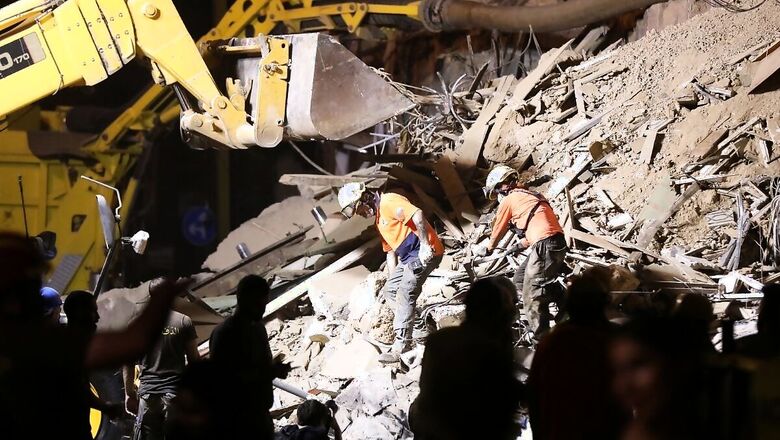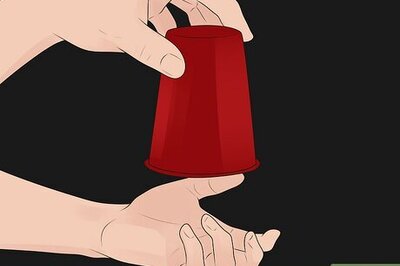
views
“Please God, give Beirut this miracle it deserves,” 32-year-old Selim Mourad told AFP, even as rescuers continued their search for a possible survivor under the rubble of a destroyed building, a month after Lebanon’s deadliest peacetime disaster rocked the capital.
Grieving people across the nation observed a minute of silence on Friday for the nearly 200 who had lost their lives after a deadly blast near the Beirut port. It was caused by 3,000 tonnes of improperly stored ammonium nitrate.
However, people also desperately watched their TV screens for a sign of hope. They were following the live images of a search and rescue operation in Mar Mikhail district, which began Thursday after a dog used by the Chilean team TOPOS detected something in the rubble. Later, a specialist sensor device detected a heartbeat under the debris of a collapsed building.
While the hopes of finding a survivor dim as time passes by, could this miracle really take place? News18.com explains.
How Long Can Survivors Last Under Rubble?
According to experts, a week at most under the best of circumstances. How injured the trapped victim is, if they have enough air to breathe and the extremity of the weather are among the determining factors for their survival. Major rescues occur 24 hours after a disaster, and after that, the chances of survival lessen by each day. Dr Richard Moon, a Duke University expert on survival told the Associated Press that food is not a big issue, as people can survive for weeks without it. However, most can survive only a few days without water, he added.
After a South Korean departmental store collapsed in 1995 – which killed 502 people and injured 937 – survivor Choi Myong Sok was pulled out of the rubble after 10 days, a report by the New York Times states. To survive, he drank rainwater and ate a cardboard box. He even played with a child’s toy to keep up his spirits, after two of his companions trapped with him died in the initial days.
Julie Ryan, a co-ordinator with UK-based group International Rescue Corps (IRC), told BBC that the ideal situation for anyone who has been trapped, is to have any sort of oxygen supply from the outside world, and any access to water.
Temperature also plays a role – if the entrapment area is too hot, the person could lose water more quickly, thinning their hope for survival.
Trapped victims can also experience the crush syndrome, which occurs after a “crushing” injury to a skeletal muscle. When a person is trapped after a disaster, their arms, limbs and other parts of the body can be compressed by the rubble, which causes muscle swelling or neurological disturbances. The end result can be fatal – renal failure or shock, and the condition requires immediate medical assistance.
Cases of ‘Miracle’ Survivals
More than two months after an earthquake hit Kashmir on October 8, 2005, a 40-year-old woman Naqsha Bibi was rescued from her kitchen. Her cousin, Faiz Din, who had found her, told BBC that the family was not even looking for her, having assumed that she had either fallen down a hill, or gone to another relief camp. Weighing just 35 kg, she was found with muscle stiffness, and was so weak she could barely talk.
Traces of rotting food were found in the small space where Naqsha was trapped, and the air inside was fresh. A trickle of water on one side of the kitchen was also found, the report states.
In a similar case, after the 2010 Haiti earthquake, a man was rescued from rubble in Port-au-Prince after 27 days of being trapped, the Guardian reported. He was found malnourished, dehydrated and mentally disturbed, but had suffered no serious injuries.
Reshma Begum was the centre of another miraculous survival, after a multi-storeyed garment factory building collapsed in Dhakha, Bangladesh in 2013. The disaster killed more than 1,100 people, but Rashma was rescued – 17 days after the incident. The then teenager said she had forgotten most of what she did under the rubble. However, she recalled that she had survived by drinking rainwater and eating food from the lunch boxes of other workers.
What Has Happened in the Beirut Case Till Now?
Francisco Lermanda, the head of the Chilean team involved in the search and rescue operation in Mar Mikhail, told reporters late Friday that the rescue work was launched after experts detected slow breathing under the rubble at a depth of three metres (yards). But it was still unclear if anyone was “alive or dead”, Lermanda said.
The pulse had slowed significantly on Friday compared to a previous recording, rescue coordinator Nicholas Saade said earlier in the day.
“After removing the big chunks, we scanned again for heartbeats or respiration, it showed low beat/respiration” levels of seven per minute, he said. “The reading before was about 16 to 18,” he added.
French civil engineer Emmanuel Durand, who is assisting the rescue effort, said 3D mapping scans of the building had so far shown no signs of life. “What we have seen so far is, unfortunately, no trace of any victim or body. We have been conducting two scans on two different rooms,” he said.
(With inputs from AP, AFP)

















Comments
0 comment